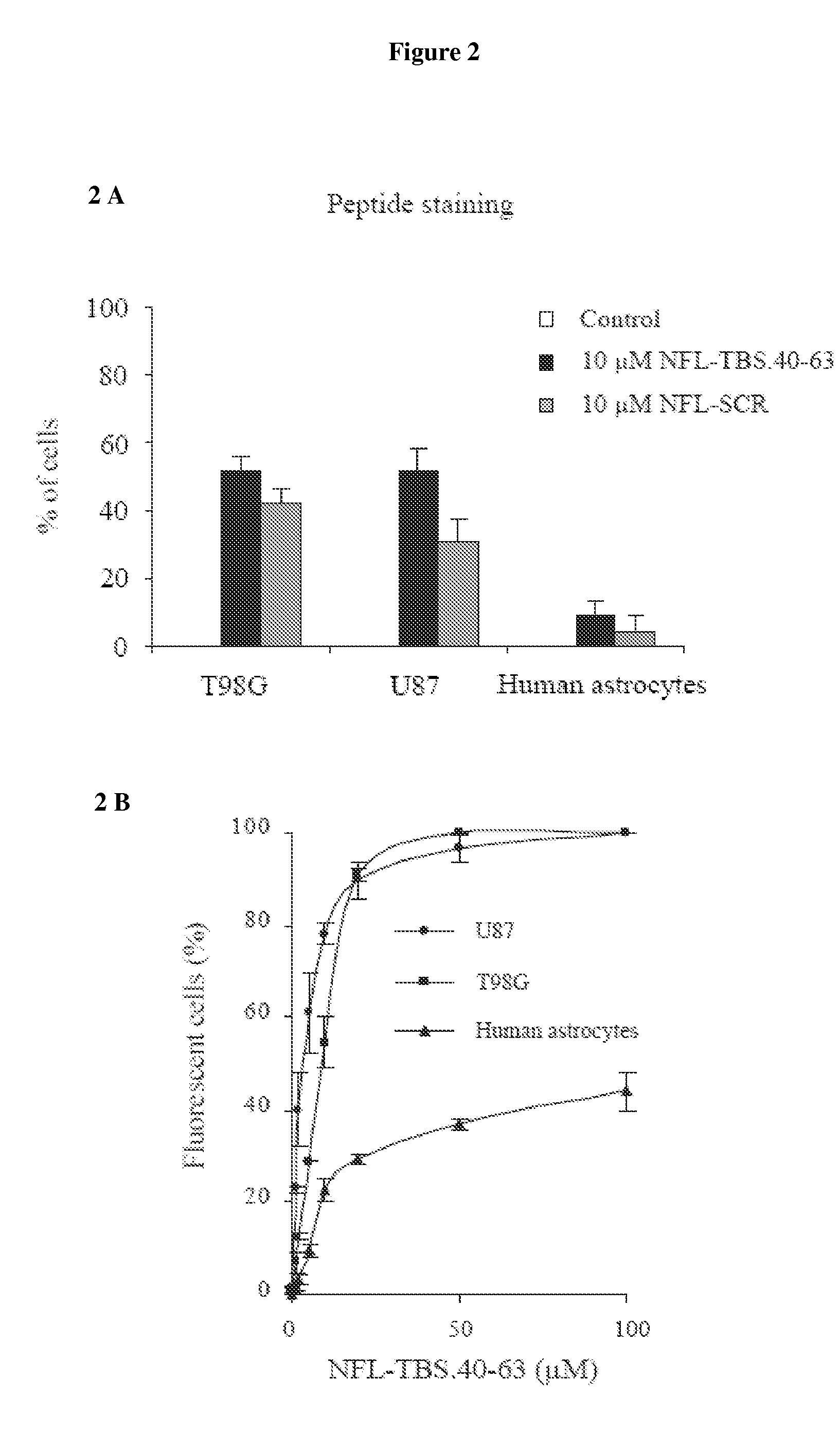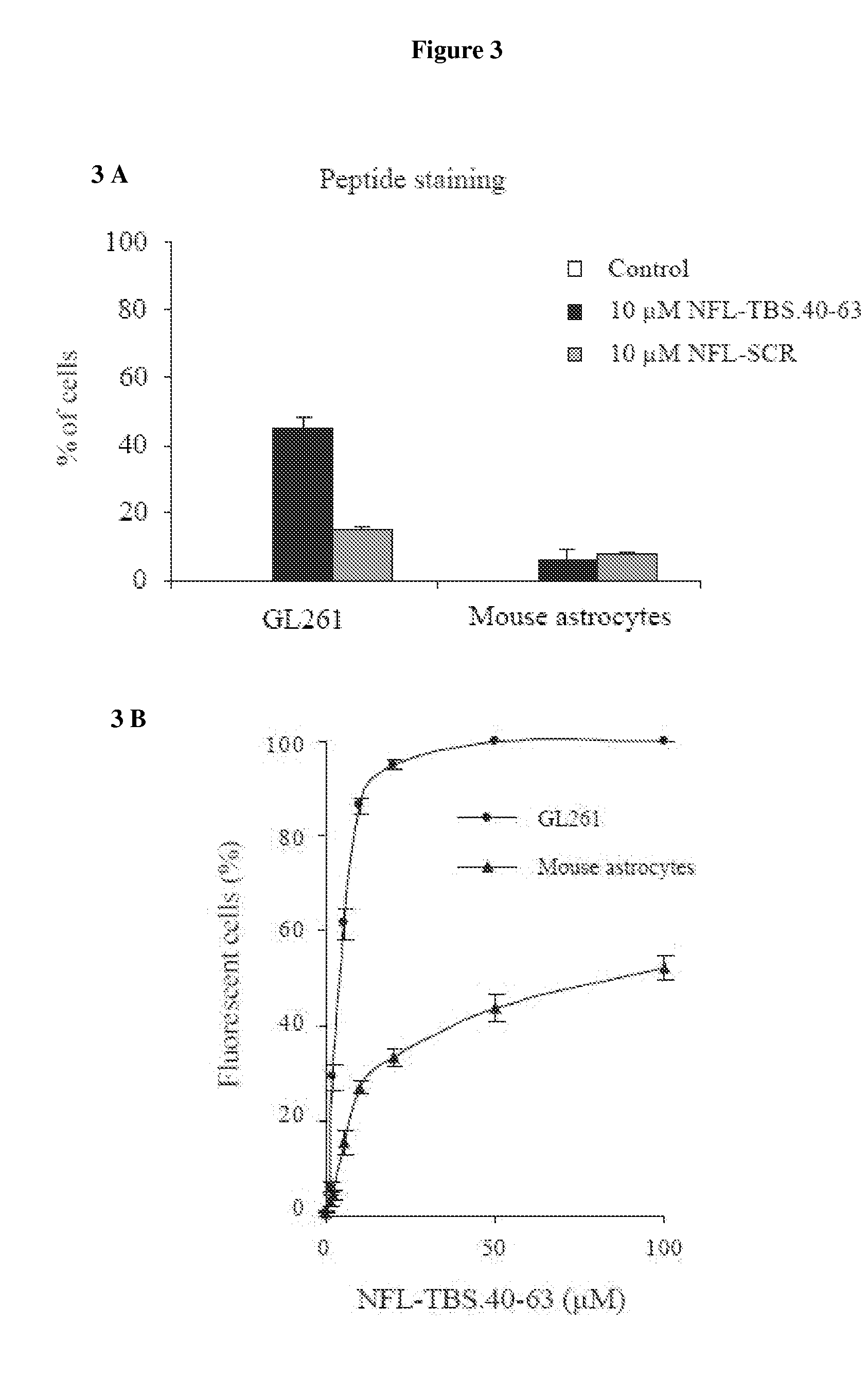Use of a neurofilament peptide for the treatment of glioma
- Summary
- Abstract
- Description
- Claims
- Application Information
AI Technical Summary
Benefits of technology
Problems solved by technology
Method used
Image
Examples
examples
1. Materials
[0110]Biotinylated or carboxyfluorescein-labeled peptides corresponding to the labeled tubulin-binding site of NFL (NFL-TBS40-63, SEQ ID NO:1) and the similarly labeled scrambled peptide (NFL-SCR, SEQ ID NO:2) were synthesized by Millegen (Toulouse, France), and dissolved in water at a concentration of 1 or 5 mM. In the NFL-TBS-biotin peptide, the biotin molecule is linked to the N-terminal end of the peptides. Also, the carboxyfluorescein molecule is linked to the N-terminal end of the peptides.
[0111]F98 and 9L glioma cell lines were obtained from ATCC (Manassas, Va., USA). Cells were grown in DMEM media with glucose and L-glutamine (Lonza France), containing 10% fetal calf serum (Lonza France), 1% penicillin / streptomycin (Sigma) in humidified incubator gassed with 5% CO2 (37° C.) until reaching 80-90% confluence.
[0112]Rat primary astrocytes were obtained from cultures of cerebral cortex as originally described (McCarthy and de Vellis, 1980). Briefly, the cerebral corte...
PUM
| Property | Measurement | Unit |
|---|---|---|
| Substance count | aaaaa | aaaaa |
| Substance count | aaaaa | aaaaa |
| Length | aaaaa | aaaaa |
Abstract
Description
Claims
Application Information
 Login to View More
Login to View More - R&D
- Intellectual Property
- Life Sciences
- Materials
- Tech Scout
- Unparalleled Data Quality
- Higher Quality Content
- 60% Fewer Hallucinations
Browse by: Latest US Patents, China's latest patents, Technical Efficacy Thesaurus, Application Domain, Technology Topic, Popular Technical Reports.
© 2025 PatSnap. All rights reserved.Legal|Privacy policy|Modern Slavery Act Transparency Statement|Sitemap|About US| Contact US: help@patsnap.com



